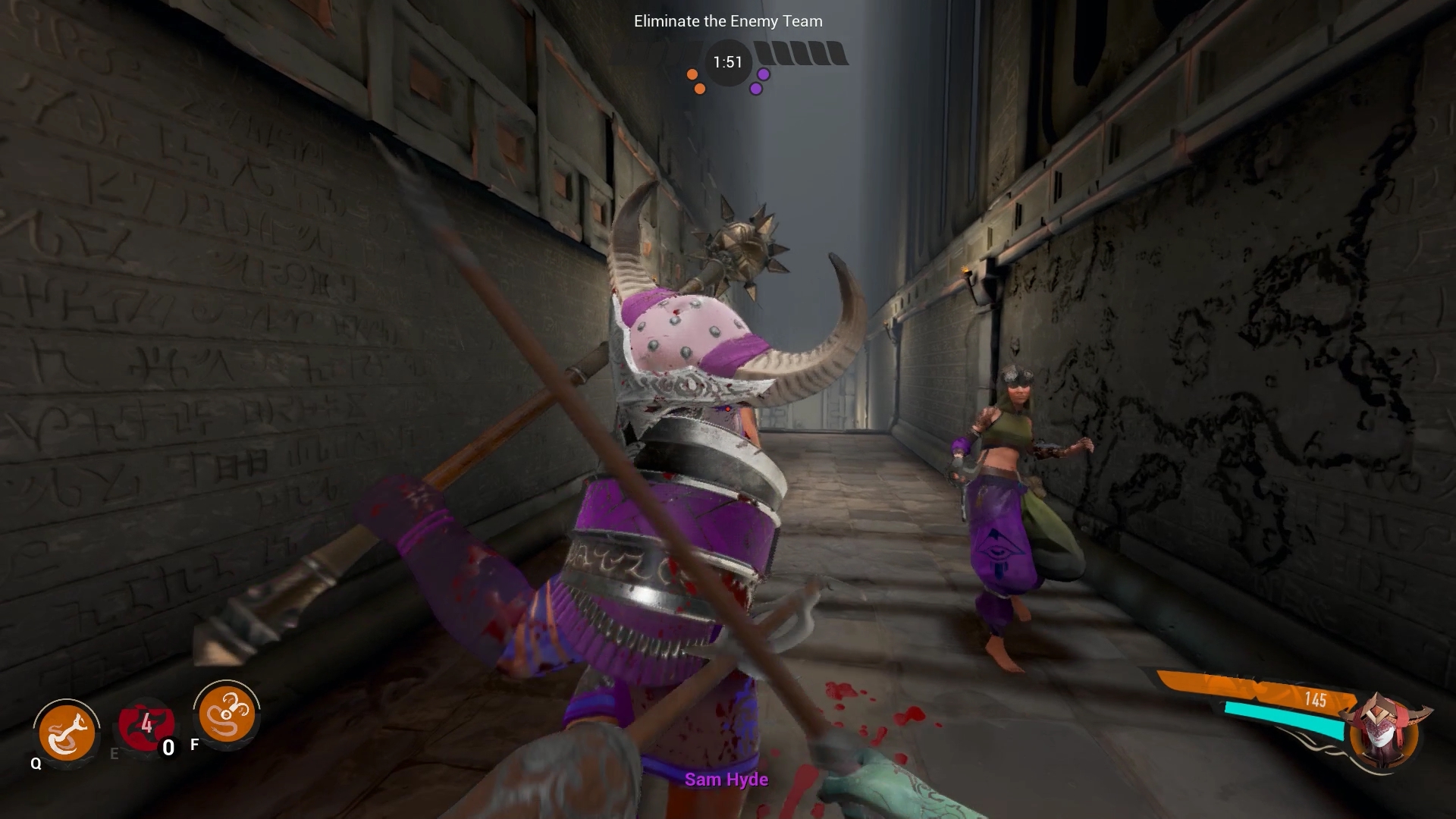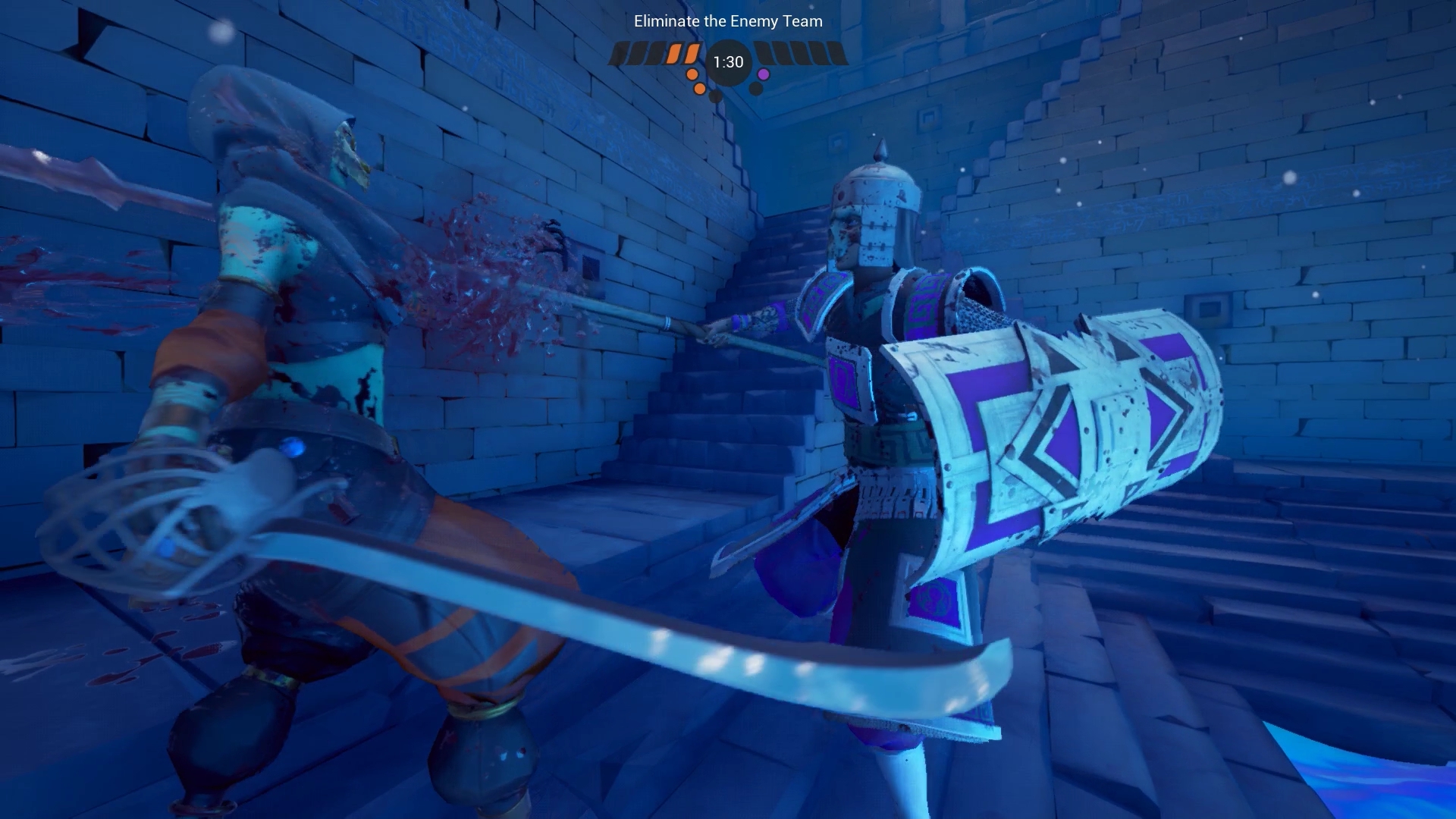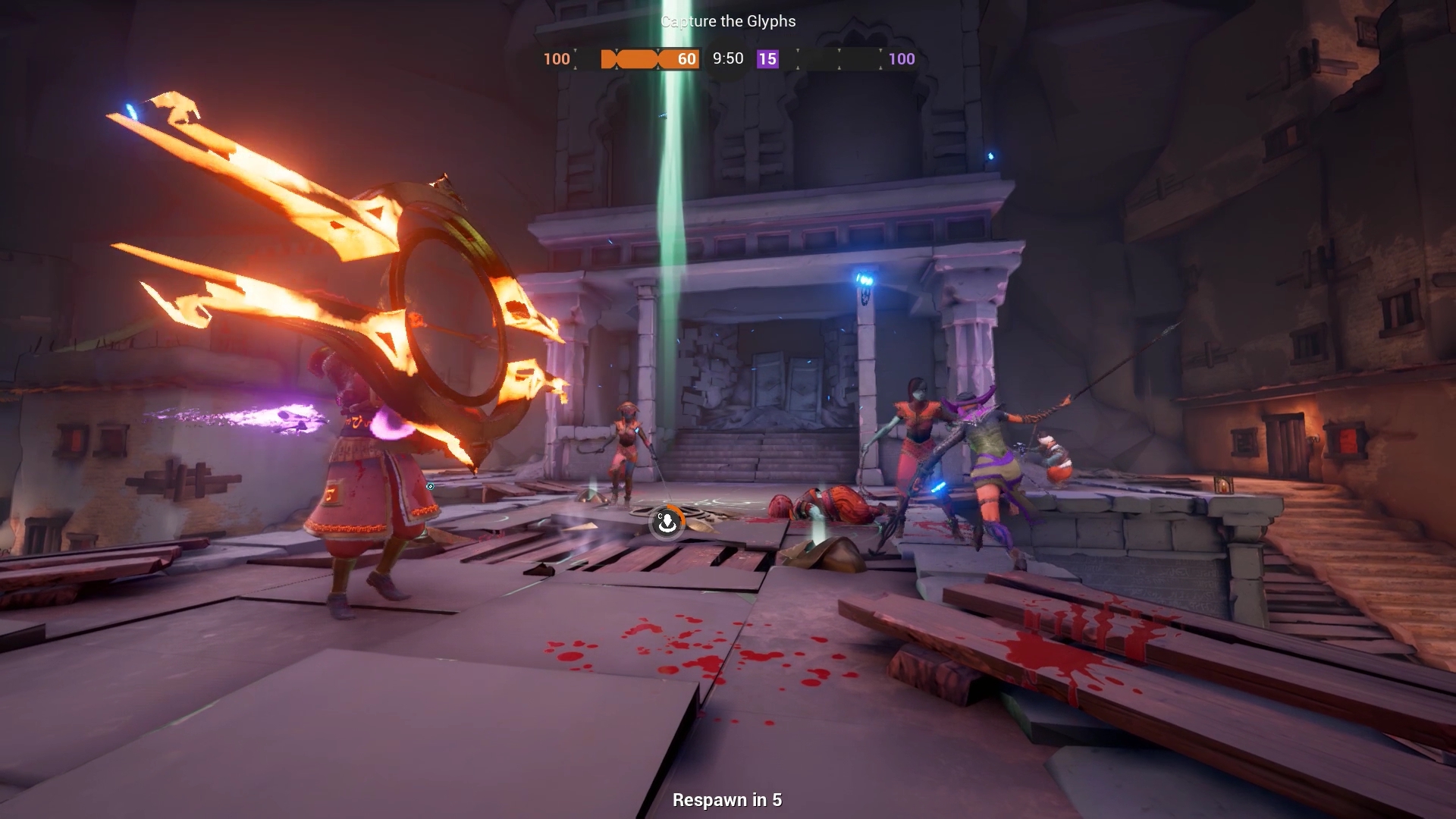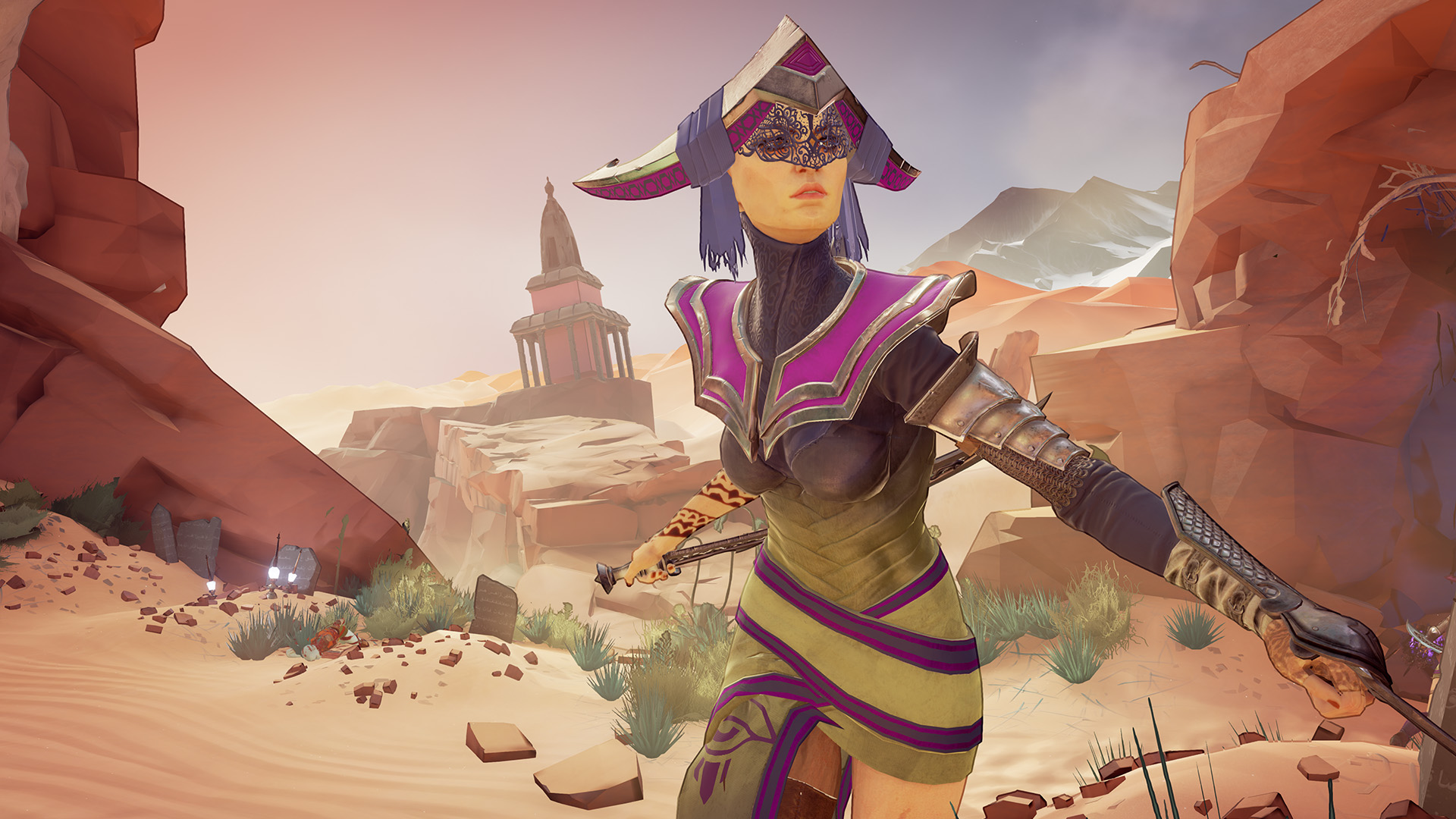Our Verdict
Interesting classes, engaging melee gameplay, and an exciting arena mode have the wind taken out of their sails by deserted servers.
PC Gamer's got your back
What is it? Team-based first person melee with MOBA-like magic powers
Reviewed on: Windows 10 64-bit, Core i7-4770K, 16GB RAM, GeForce GTX 1070.
Price: $30/£23
Release date: Out now
Publisher: Torn Banner Studios
Developer: Torn Banner Studios
Multiplayer: Up to 20 Online
Link: Official site
Buy it: Humble Store
Read our affiliates policy.
Mirage: Arcane Warfare reminds me of the games I used to make up on the fly with other kids on the playground. “I fire a magic spear at you!” “Oh yeah? Well, I summon my magic carpet and fly out of the way!” Adding those kinds of flashy, improvisational magical abilities to the high skill cap, hack-and-slash combat that worked so well in Torn Banner’s previous flagship, Chivalry, widens the tactical toolbox in the same way Total War: Warhammer did by introducing fantasy elements to a previously historical series. Unfortunately, the dismally small player base at present makes these mystic melees harder to enjoy.
According to SteamCharts, as of this writing, Mirage has an all-time peak of 190 concurrent players—which is less than I could expect to find in Alien vs Predator 2 on an average afternoon when I was still playing that years after its release. During the day, I’m lucky to find a server with under 200 ping and any players at all. I live in a relatively populated region, so I can only imagine what it would be like if I were located somewhere more out of the way. During the evenings in the US, there are usually a handful of full servers with decent ping, and a couple others, with only a few players in each.
This is unfortunate, because Mirage can be fun and exciting. The emphasis on special abilities makes it feel a bit MOBA-ish, along the lines of Overwatch but with more of a melee focus. The team synergies and interesting tactics opened up by the wild abilities available to each class can create some genuinely madcap, enjoyable deathmatches, and the multiple classes which can fly generate tense aerial duels high above the larger battle.

Casting with class
It doesn’t have exactly the same depth as Chivlary, but still requires a high degree of skill and predictive ability to get good at it.
My personal favorite class is the Entropist. He can glide around on a flying carpet for a limited time, and his main cooldown ability is a healing grenade, making him one of the only classes that can restore his and his teammates’ health. This in itself is a big break from the Chivalry formula, and allowed me to play as something resembling a highly mobile MMO healing class. Abilities like these encourage teamwork in a way that feels natural and synergistic, whereas a lot of melee team deathmatch games can get to feeling like everyone-for-themselves skirmishes.
Not all classes are as well designed, though. The nimble, low-health Tinker, for instance, I found far less impressive. She can lay various traps for opponents, but they have such a small radius, and so many of the maps lack meaningful choke points, that I never felt like I got my money’s worth with her. I was usually relegated to making the most of her nimble rapier strikes and hoping to out-damage melee classes with a lot more health than me. Some abilities that seemed less useful in deathmatch could potentially shine in a mode like Capture the Flag where static defense matters more. But certain modes are nearly impossible to find a group for at all unless you bring a lot of friends.

While you’re looking for a group, at least you’ll have time to enjoy the well-designed characters and environments. Each class has a very distinct silhouette and visual style, with unlockable costume pieces and color schemes allowing you to add your own visual flair. It’s all very Arabian Nights, with polished tile floors and intricate archways—a significant departure from the muddy, realistic world of Chivalry. The maps themselves are also cleverly designed, diverse, and have a good flow to them when the server population is sufficient to really get some carnage going—with the exception, as I mentioned before, that not all of them have meaningful choke points able to take advantage of certain class abilities.
The up-close bashing and slashing is very enjoyable, especially in a one-on-one context. It doesn’t have exactly the same depth as Chivlary, but still requires a high degree of skill and predictive ability to get good at it. Attack and parry timings, using feints, and precision aiming of spears and heavy sticks are all significant factors. Each weapon also has three attack types—a long-ranged but weaker jab, a powerful overhead chop (which deals friendly fire by default to cut down on spamming in crowded team fights), and a standard slash that’s somewhere between the two. The main issue I ran into was, again, due to the low player population. I was often forced to play on high ping servers just to get into a match, and Mirage’s emphasis on distance and timing doesn't lend itself to a 240 ms delay.
The ranged combat, by contrast, is very underwhelming. Even limited-use specials like the Entropists’ Disintegrate beam pack all of the visual and auditory punch of a party popper, with damage scaling to match. Unloading from afar never feels like anything more than dealing bee stings to an embattled enemy who will have to be finished off up-close anyway. Add to this the fact that missiles—even specials—can be blocked just like melee swings, and I usually found myself wondering why ranged attacked are in the game at all.

Welcome to the Thunderdome
Some entire modes are almost dead in the water, because you can’t find a populated server to play them on.
Arena is the best of the modes, forcing small teams to face off in enclosed, intimate, fighting game-esque battlefields with nowhere to run. Matches put the emphasis on tightly-packed, technical duels and using the various class-specific movement abilities to escape from sticky situations and be exactly where your opponents don’t expect. There’s also a stock standard Team Deathmatch, an objective-based mode that’s a hybrid between capture point and payload escort, and Capture the Flag. These traditional shooter modes can be fun, especially with a team that knows how to use all the various class roles in tandem. But I had the most fun playing Arena and thinking of it as more of a fighting game with 3D movement.

Mirage is made up of entertaining and well-designed systems, some asymmetry in usefulness between various classes aside. But as a multiplayer-only game, it’s impossible not to bring up the astoundingly tiny player base (again). It affects every layer of the experience, from ping, to how entire modes are almost dead in the water, because you can’t find a populated server to play them on. This makes Mirage tricky to recommend at the moment, as much as I’d be glad to see its active users swell and have more people to blast and bash around.
But Mirage is fundamentally fun. When the right factors align, it’s a lot of fun. The melee combat keeps me on my toes, trying to think as many steps ahead of my opponent as I can, all while staying poised to adapt to the changing battlefield conditions that fireballs and magitech land mines can bring. Each class offers unique and interesting tactical opportunities, even if they’re not all equally interesting. It’s a shame that I can only really recommend it so long as everyone takes my recommendation.
Interesting classes, engaging melee gameplay, and an exciting arena mode have the wind taken out of their sails by deserted servers.
Len Hafer is a freelancer and lifelong PC gamer with a specialty in strategy, RPGs, horror, and survival games. A chance encounter with Warcraft 2: Tides of Darkness changed her life forever. Today, her favorites include the grand strategy games from Paradox Interactive like Crusader Kings and Europa Universalis, and thought-provoking, story-rich RPGs like Persona 5 and Disco Elysium. She also loves history, hiking in the mountains of Colorado, and heavy metal music.


